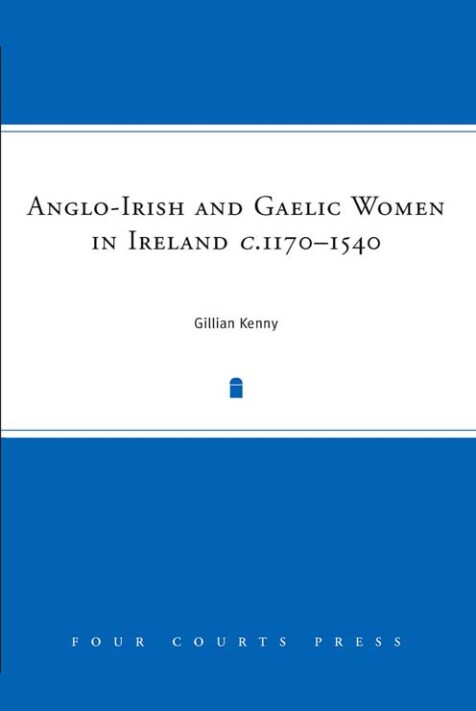Anglo-Irish and Gaelic Women in Ireland, c.1170–1540
Gillian Kenny
‘Gillian Kenny’s book is another welcome addition to a growing corpus of work [on medieval women] … Kenny is clearly in her element when disentangling complex issues of English inheritance litigation, and her study provides a foundation of knowledge for the practice in colonial Ireland … [Her] vivid examples of female employment (and its reception within society) lead to the larger point of the approachability of this text. Kenny has an eye for memorable cases in point. The book’s structure also aids to its digestibility … Kenny provides an accessible overview of just over 350 years of Irish history', Colin Veach, Irish Economic and Social History (2013).
‘Although women’s studies in Ireland has made great strides in recent decades, historians have tended to concentrate on more recent times and contemporary themes, so a book examining women in medieval Ireland is to be particularly welcomes’, Books Ireland.
‘Gillian Kenny’s book offers a concise summary of women’s lives in both Anglo-irish and Gaelic (her labels) regions of medieval Ireland – or, rather, a summary of the legal categories of women created by Anglo-Irish legal discourses…between 1170 and 1540…Kenny’s book provides a useful starting point for readers who know nothing about the gender systems of colonial Ireland…we need more books on women in medieval Ireland. I applaud Kenny’s industrious research among the Anglo-Irish records and her effort to contribute to this still underdeveloped field’, Lisa Bitel, H-Albion (November 2008).
‘With the 2002 publication (by Four Courts Press) of Dianne Hall’s monograph on women and the church in medieval Ireland and now Gillian’s Kenny’s study of medieval Irish women the subject has finally come into its own. As a result, those studying and teaching women’s history are now immeasurably better supplied with works to use and recommend to students ... Kenny’s book studies the lives of Irish women between two points in history – the arrival of the Anglo-Normans in 1169 and the start of the Protestant Reformation in 1540. This is described by the author as “a unique period when two separate societies with distinct ways of addressing the legal, social and economic needs of women existed alongside each other”. One of the many strengths of the study lies in its attempt to provide an inclusive account of women from different cultures and societal levels and at different stages of their life spans. The nature of the surviving source material results in the inevitable unevenness of coverage, but the author is forthright in identifying gaps where they occur and courageous in suggesting plausible scenarios ... Gillian Kenny has done much to rescue medieval Irishwomen from comparative obscurity and her book deserves a wide readership among all those interested in the history of that unique period’, Dr Margaret Murphy, EOLAS.
‘The number of historians whose work focuses on women in medieval Ireland is astonishingly small … Kenny makes a genuine attempt to address this lacuna … Kenny’s work operates well as an introduction to the study of women in medieval Ireland and certainly can serve as a springboard for more concentrated and systematic study … provides readers from the undergraduate to the professional level with tantalizing glimpses of women in medieval Ireland, ones that future research can build on', Linda E. Mitchell, Medieval Prosopography (2013).

